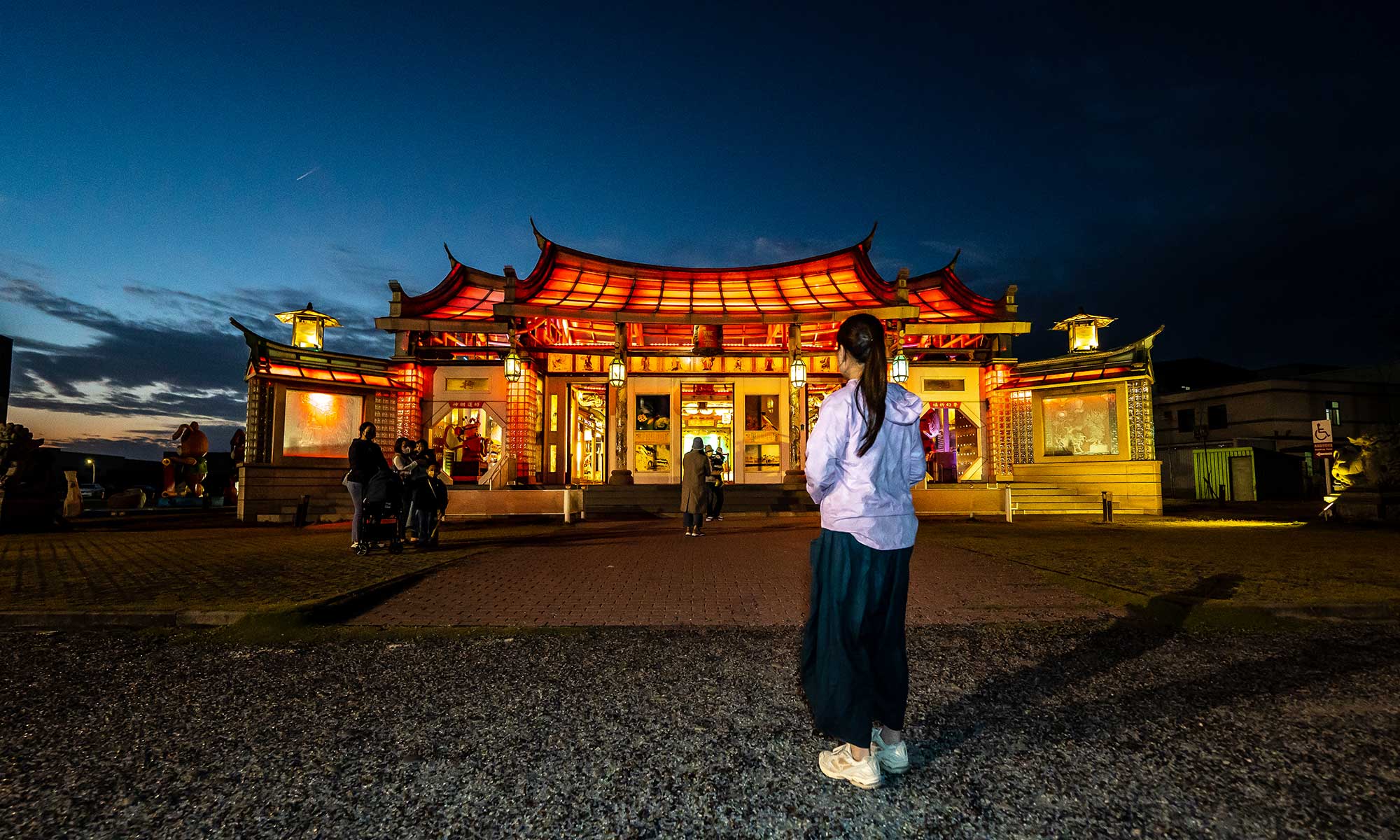With a mixture of Confucianist, Buddhist, and Taoist temples, Japanese Shinto shrines, and the Christian churches of Taiwan’s indigenous tribes, Taiwan is one of the top three most religiously diverse countries in the world. Taiwan’s temples often venerate a mix of Daoist and Buddhist gods according to local custom.
In Taiwan, temples and shrines are as ubiquitous as the country’s famous convenience stores— it quickly appears there is nearly one on every street corner of the country. Shrines are often erected wherever there is space: from the narrow fire alleys between apartment complexes, to in caves and under suitable overhanging rock formations in Taiwan’s mountains.
Temples and shrines vary greatly in size. Taiwan’s largest Buddhist Monastery Fo Guang Shan covers over 100 hectares (247 acres) of Kaohsiung’s mountainside, while some local Earth God shrines might be as little as a kitchen table. Nearly all temples welcome visitors regardless of their inclination, and tourism and appreciation are always welcomed.
The following are five of Taiwan’s most interesting temples.
Lukang Longshan Temple in Lukang, Changhua County
Taiwan’s Most Famous Rural Temple
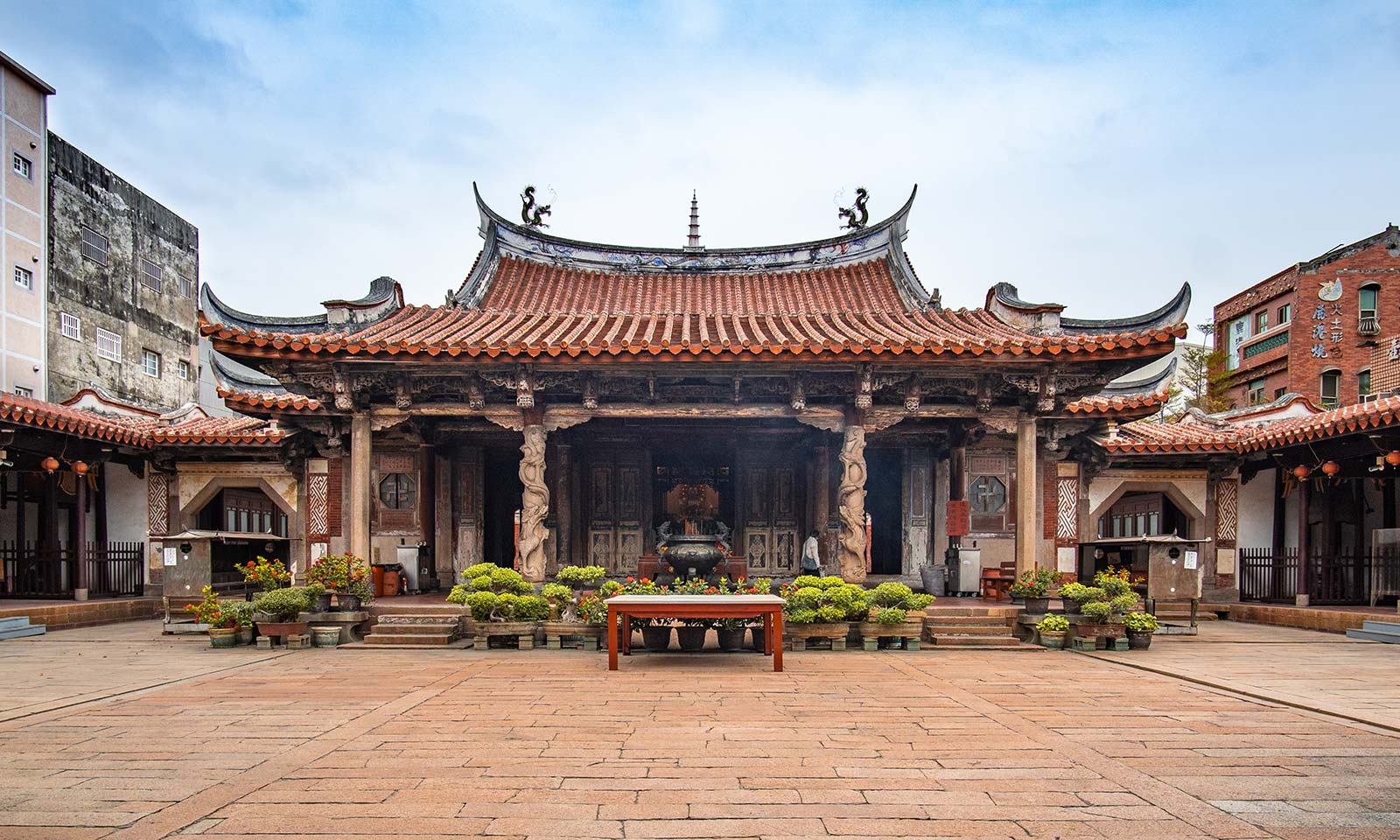
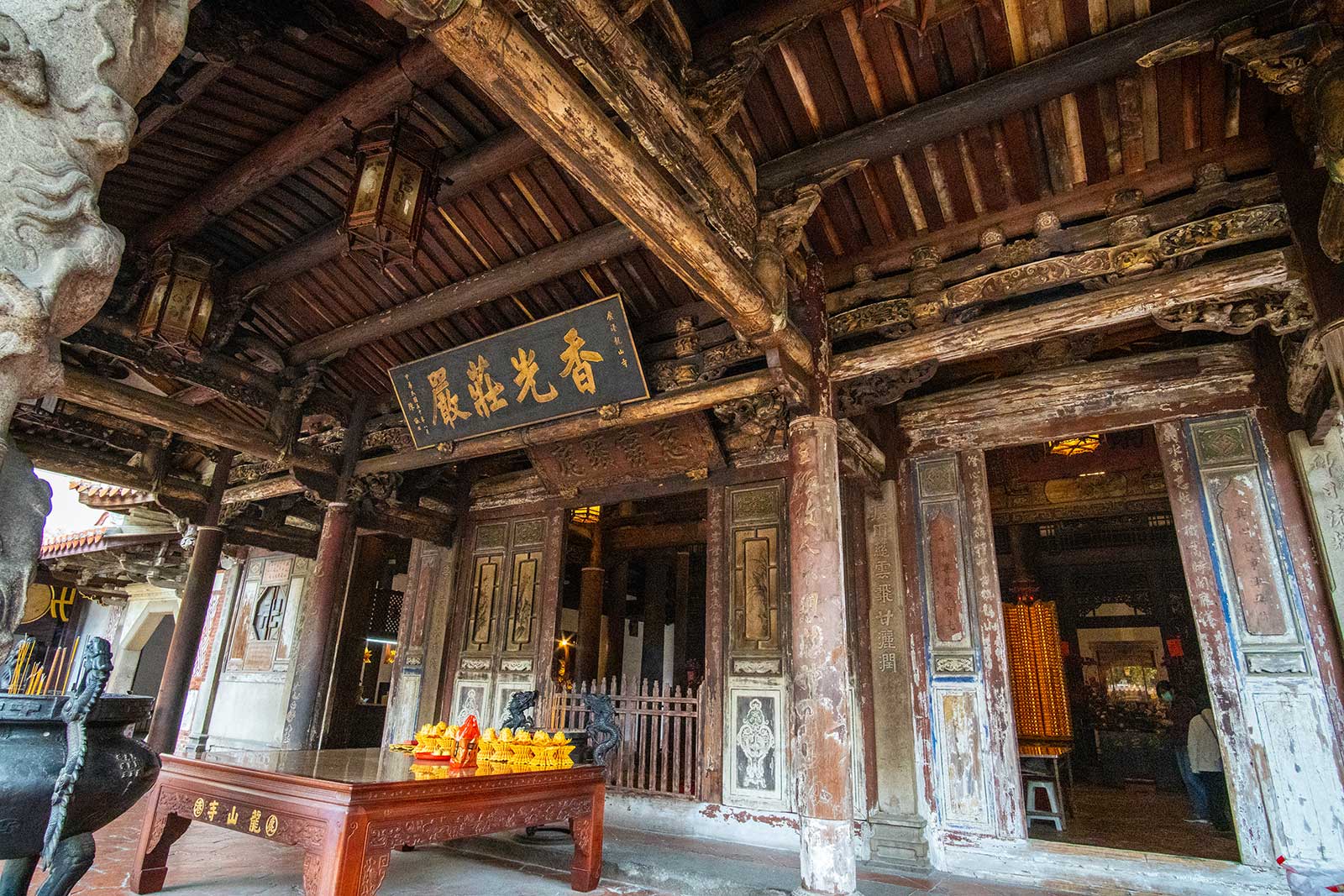
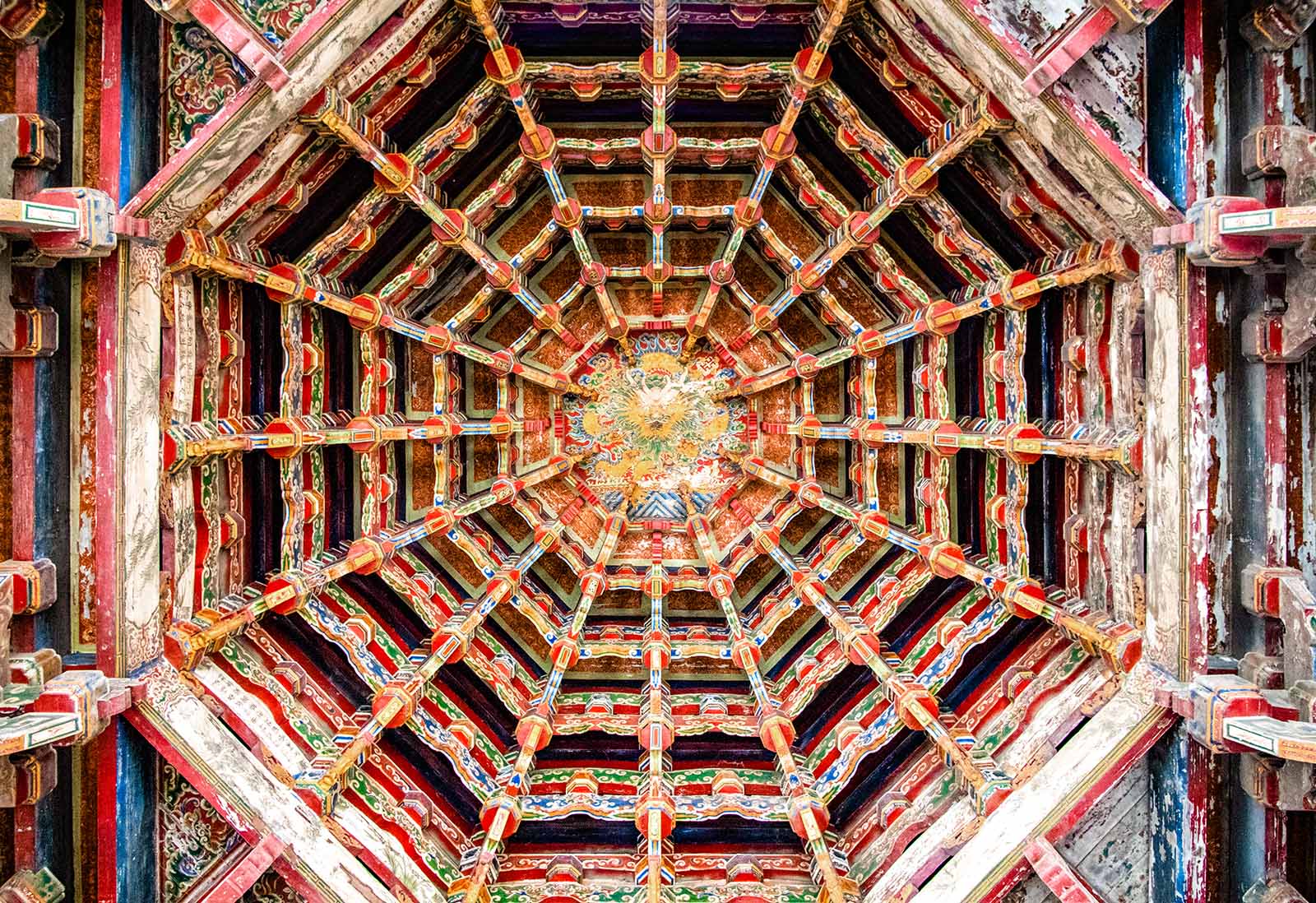
Lukang Longshan Temple, sometimes referred to as the “Imperial Palace of Taiwan”, is considered Taiwan’s best preserved piece of Qing-dynasty architecture and it’s most famous Buddhist temple. It is also designated as a Natural Heritage Site by the Ministry of Culture.
Said to have been constructed during the Ming-dynasty in 1653, it was then moved in 1786 and further expanded in 1798. Since then it has suffered through many disasters including the disastrous 1999 earthquake, but has always been repaired with the utmost care by Taiwan’s finest craftsmen.
Temple-aficionados will be impressed by painted murals, woodcarvings, and the largest caisson or “spiderweb” wooden ceiling in Taiwan. The 9,600 square foot complex has four main structures and two courtyards and is known as a “sun construction”. The reason being, when viewed from above, the building plan resembles the Chinese character ‘日’ or sun.
Hu Sheng Glass Temple in Lukang Township, Changhua County
Folk Religion Meets High Technology
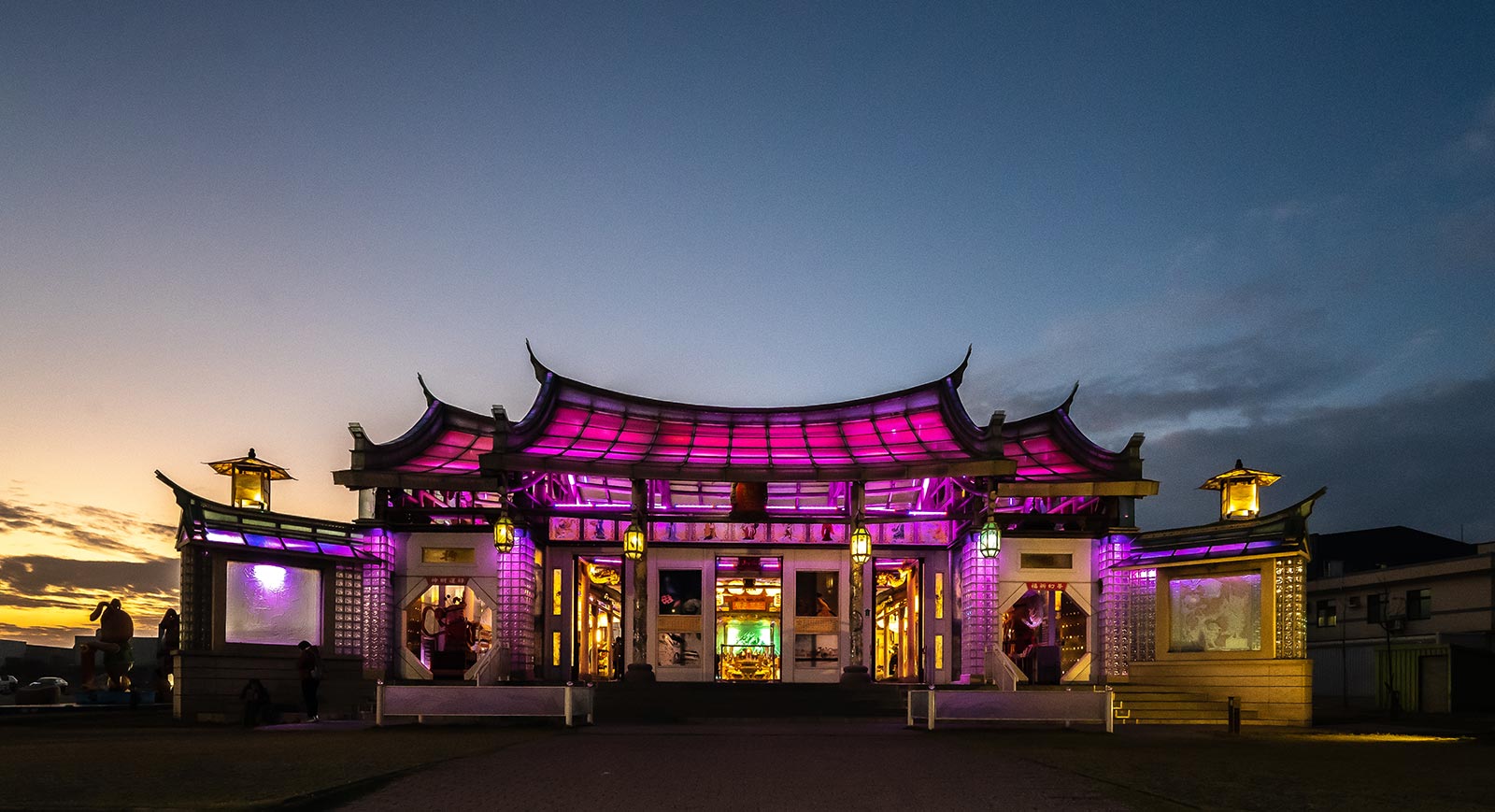
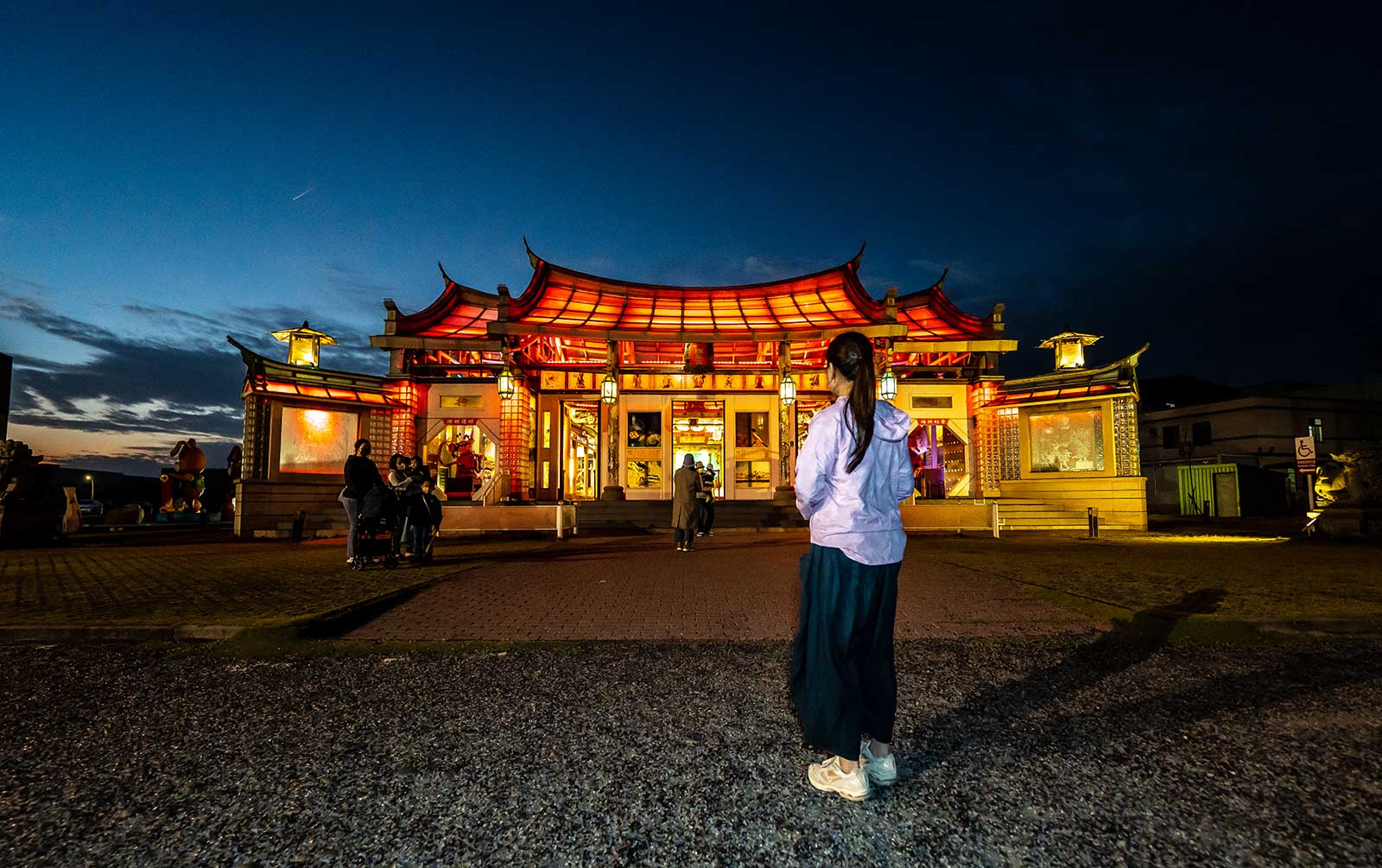
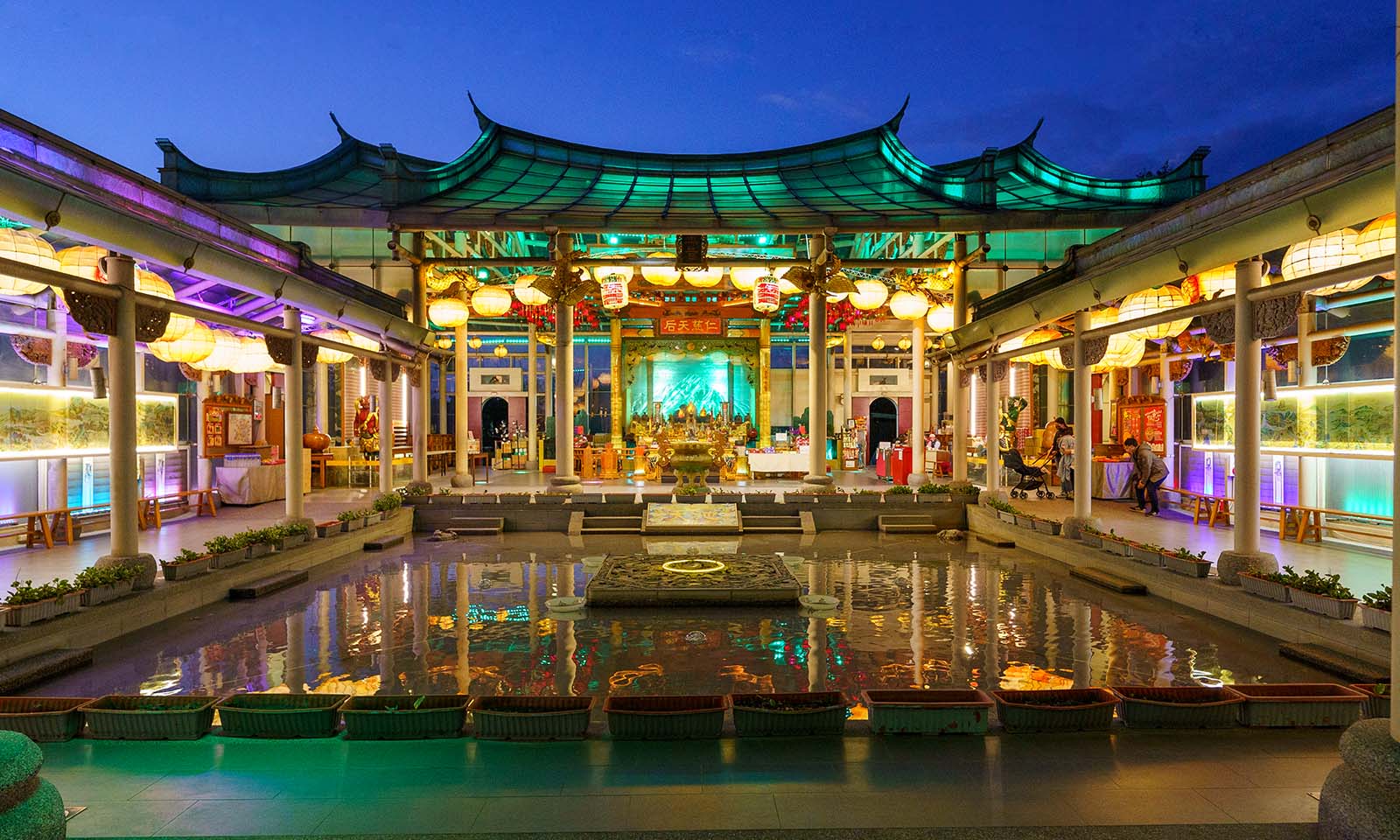
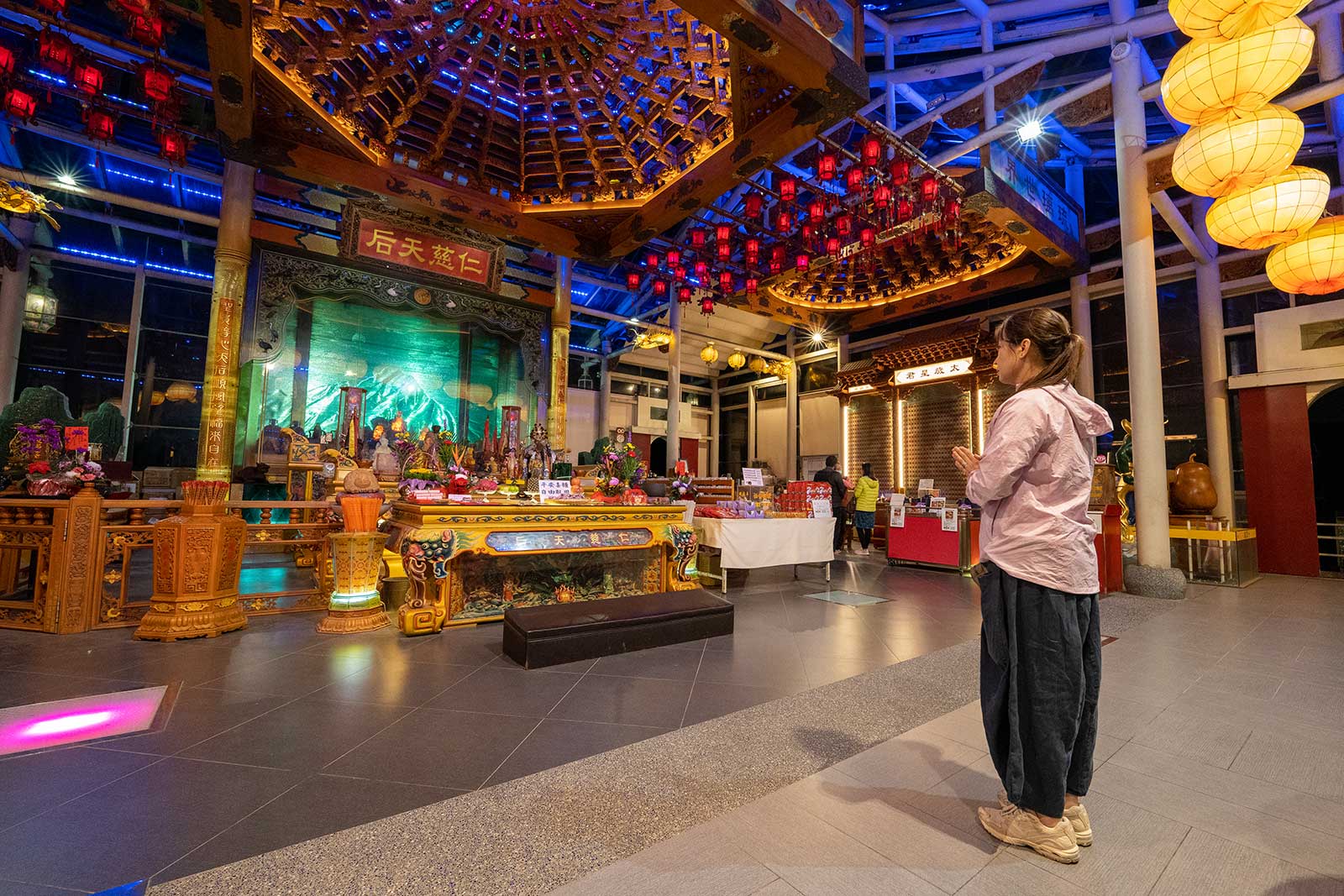
The Hu Sheng Glass Temple, dedicated to the ocean god Mazu, is the only temple in the world made entirely of glass. Not a single screw was used in the construction of this temple, which consists of seventy thousand pieces of hand-worked glass held together with glass clamps. Constructed as a joint project with Taiwan’s glass manufacturers, the temple also displays specially crafted glass folk art including the Glass Sedan Chair, the Glass Mazu Boat, the Mobile Glass Temple, the Sun-Moon Heaven-Earth Tunnel, and the Tourism Train.
Inaugurated in 2012, this is one of Taiwan’s most interesting modern temples. It is an excellent representation of innovation and craftsmanship in temple design.
Bishan Kaizhang Shengwang Temple in Neihu District, Taipei City
Beautiful Temple With Stunning Views
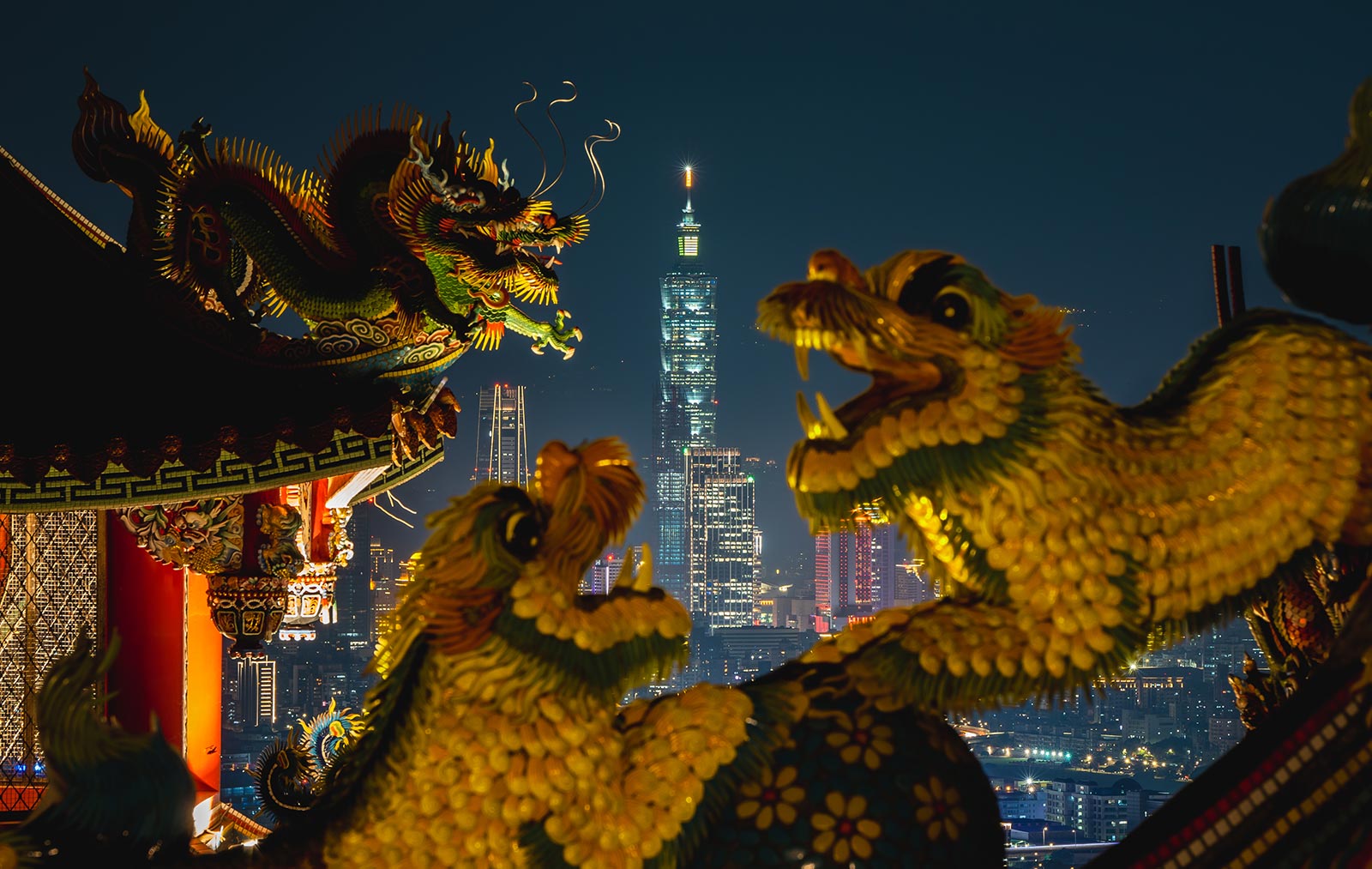
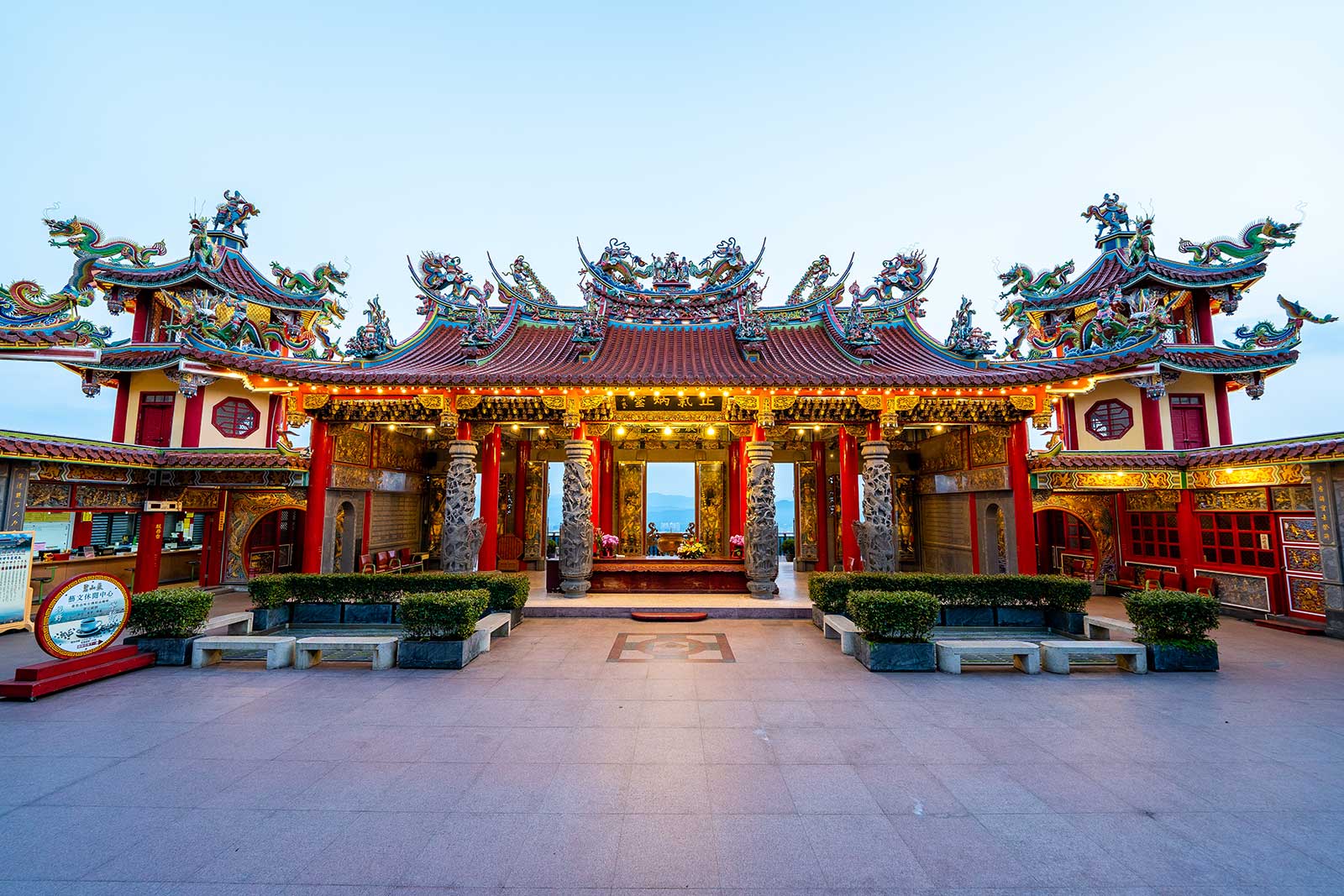
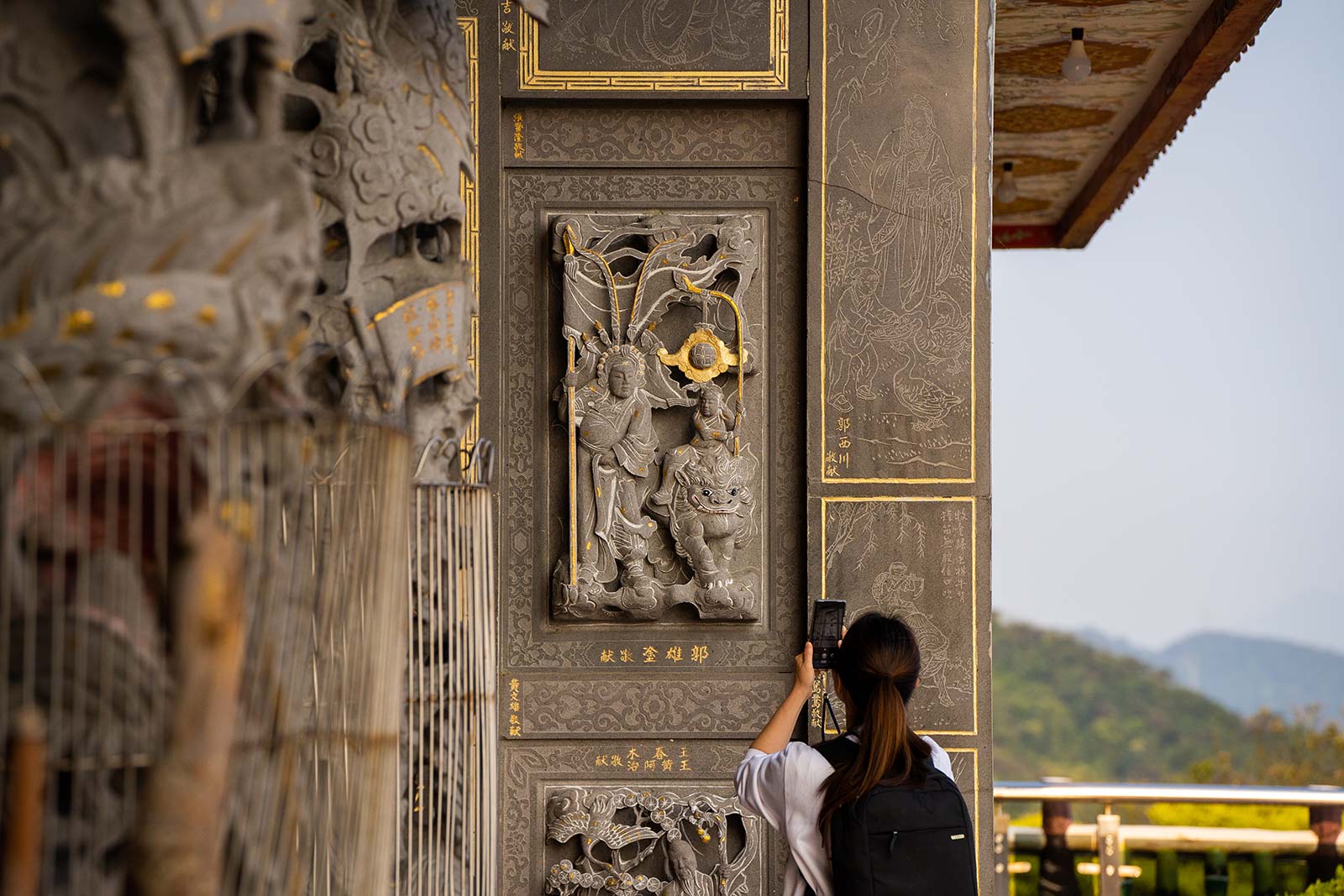
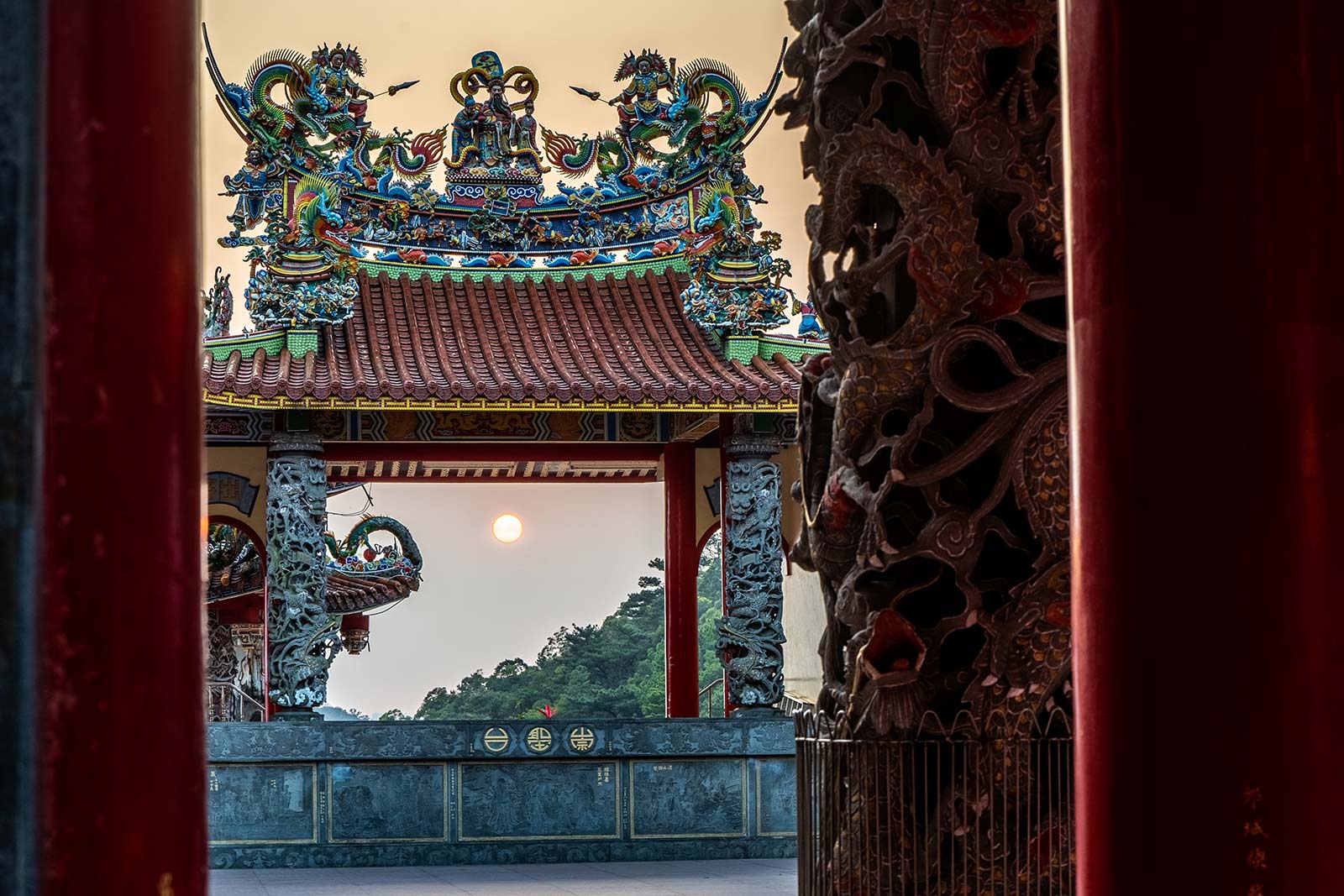
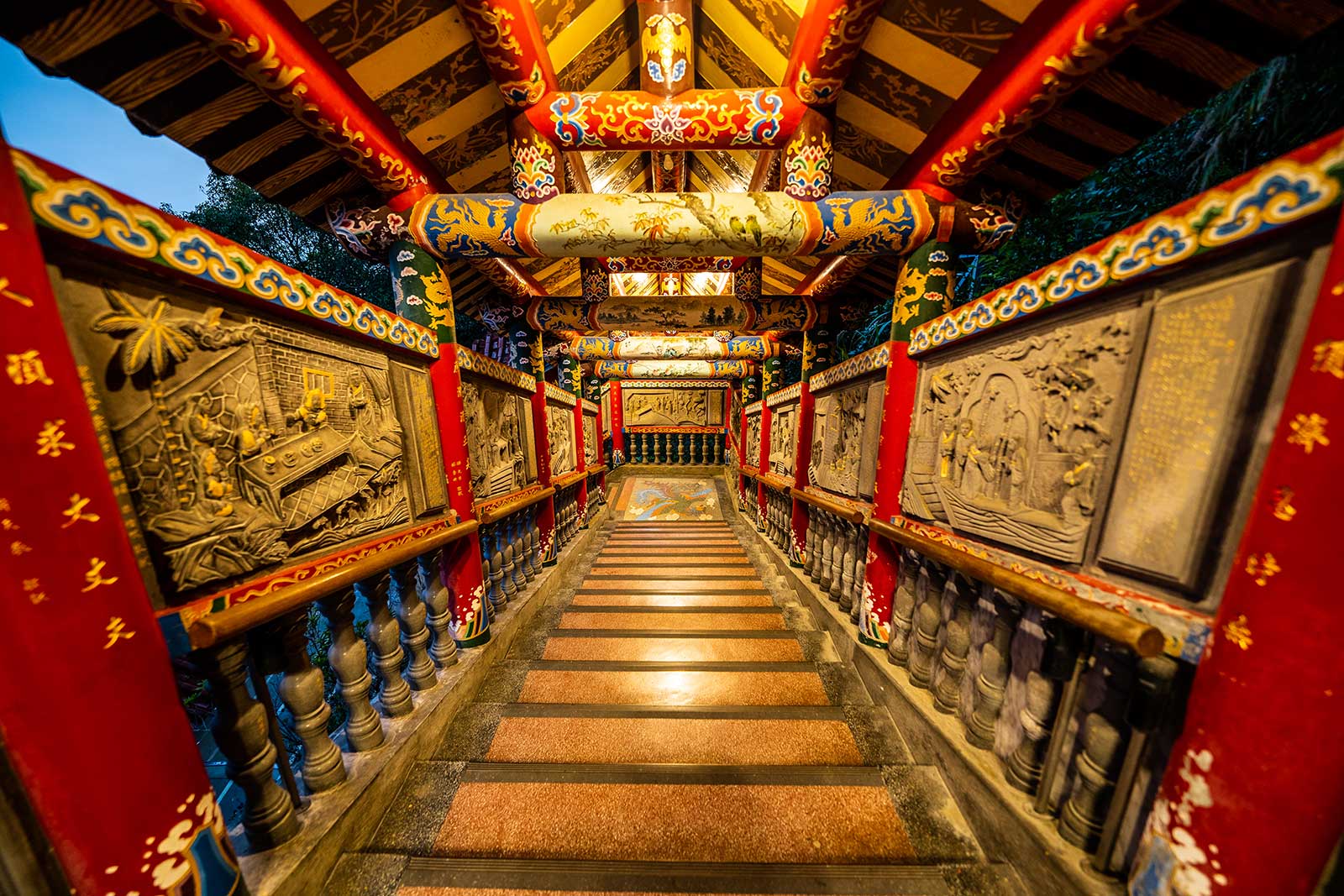
The Bishan Kaizhang Shengwang Temple—that’s a mouthful—in Neihu is a rather low-key temple in Taipei’s mountains. But, it is also a secret that brings a smile to local temple lovers. This magnificent four-story temple is masterfully built into the side of the mountain and features exceptionally detailed stone-carvings. It also happens to offer an excellent view of the Taipei Basin and the Danshui River, which makes it popular with photographers and sightseers alike.
It is the largest temple in Taipei dedicated to the folk-deity Kaizhang Sheng Wang. However, as is common in Taiwan, the side halls also feature effigies of and venerate many other secondary gods.
Luck with donations has allowed the temple to expand beyond its original limits and luckily the temple’s designers have done an excellent job of integrating the structure with the nature that surrounds it. The colorful stairwell that leads up to the original shrine is particularly beautiful.
Fo Guang Shan Monastery & Buddha Museum in Dashu District, Kaohsiung City
The Largest Buddhist Monastery in Taiwan
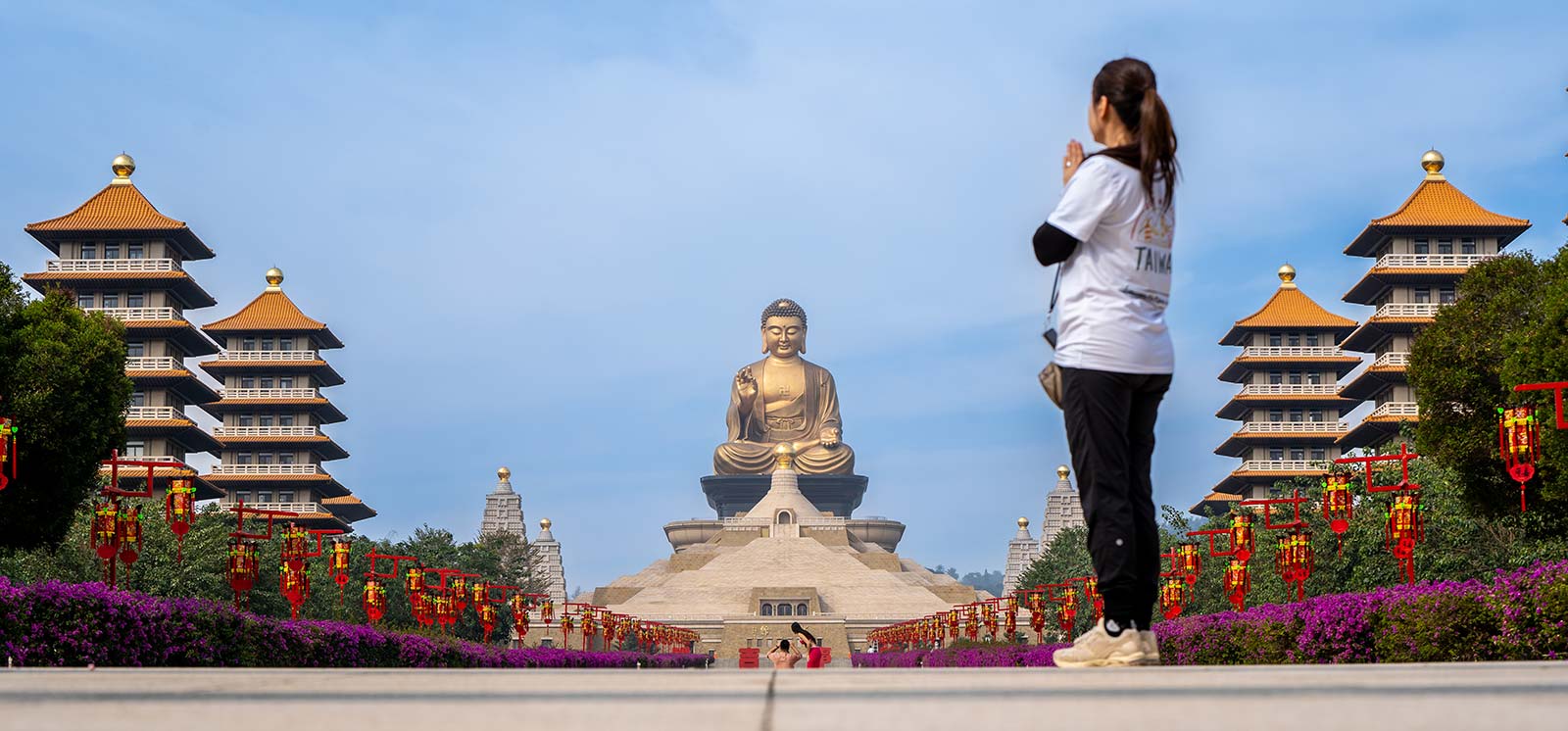
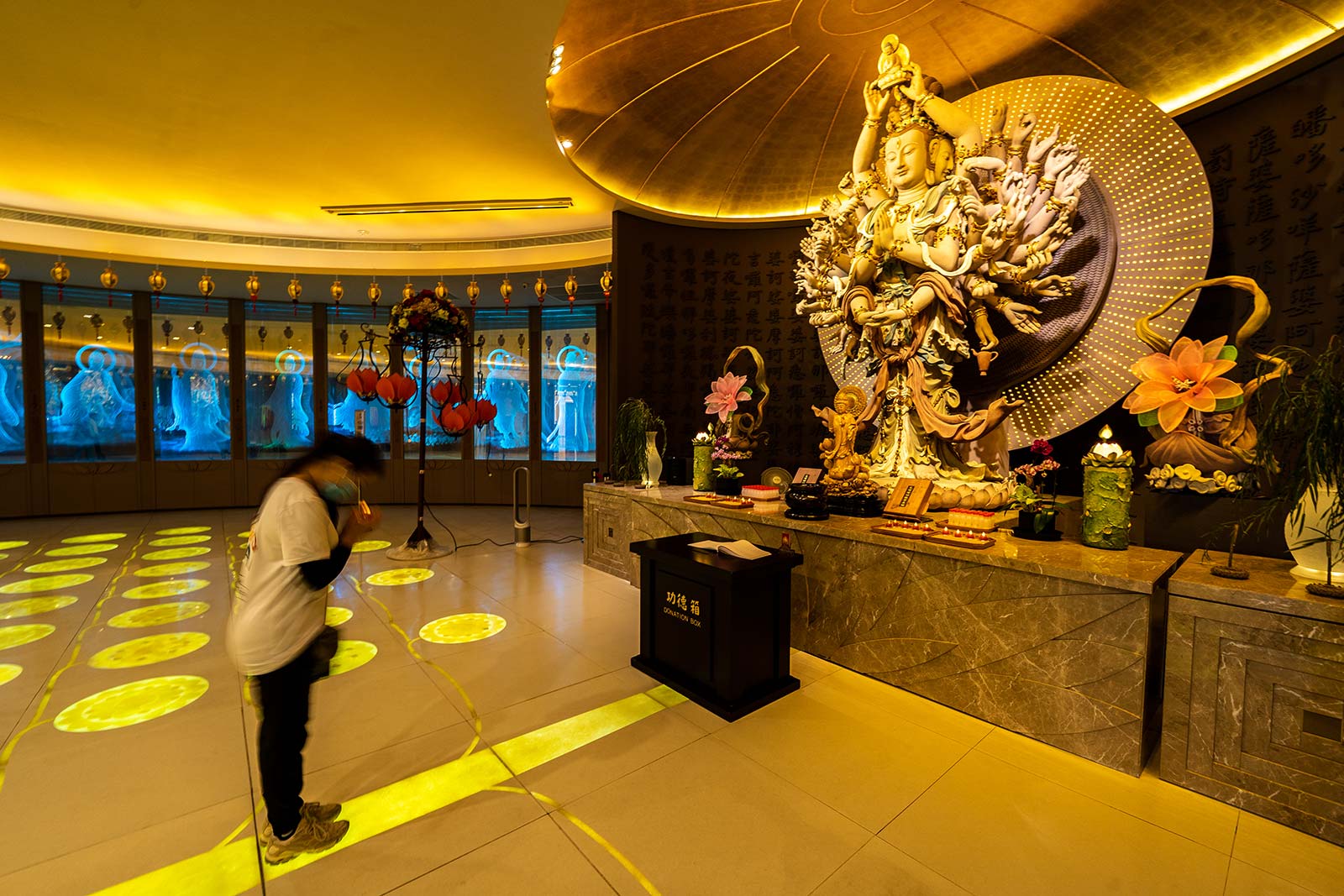
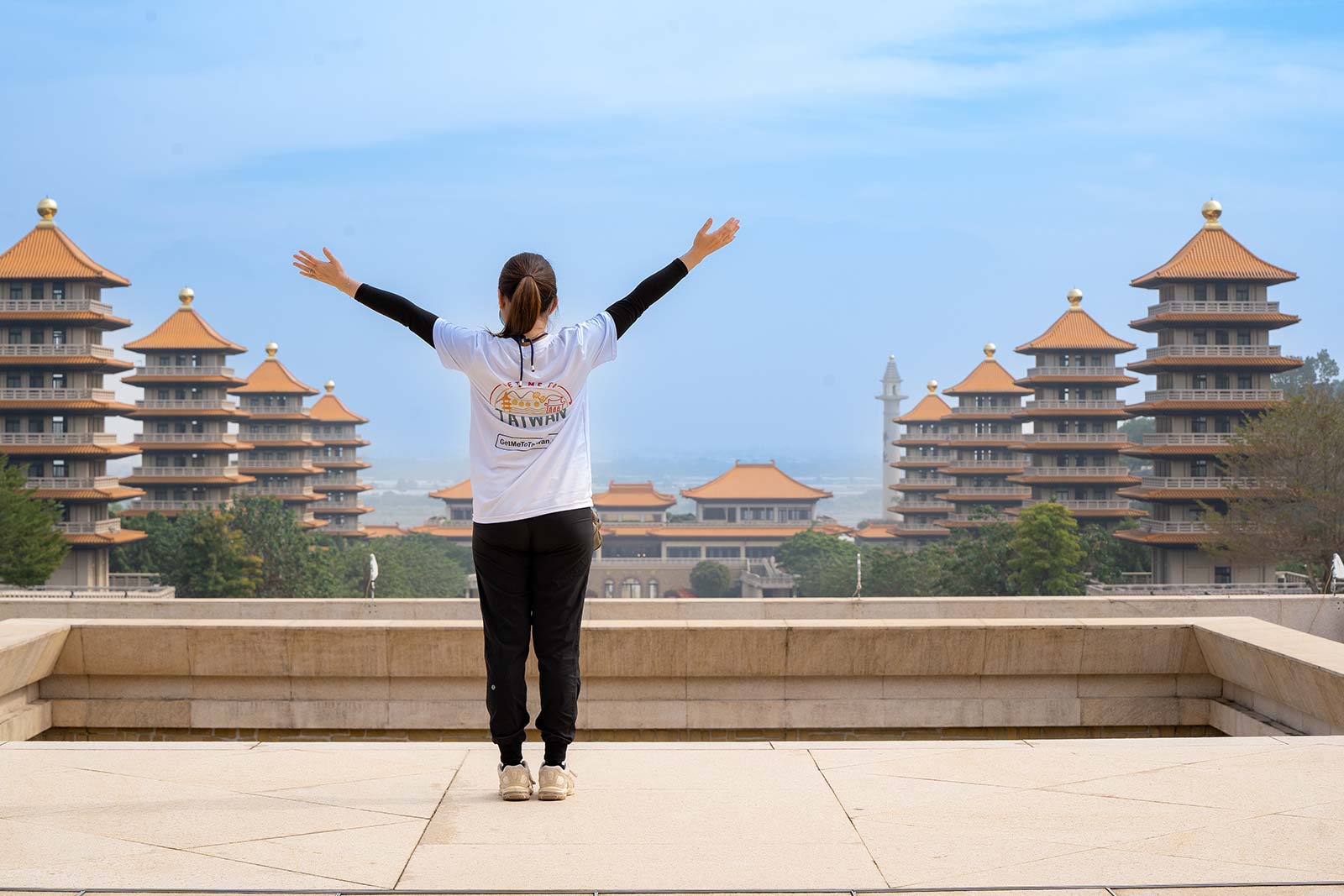
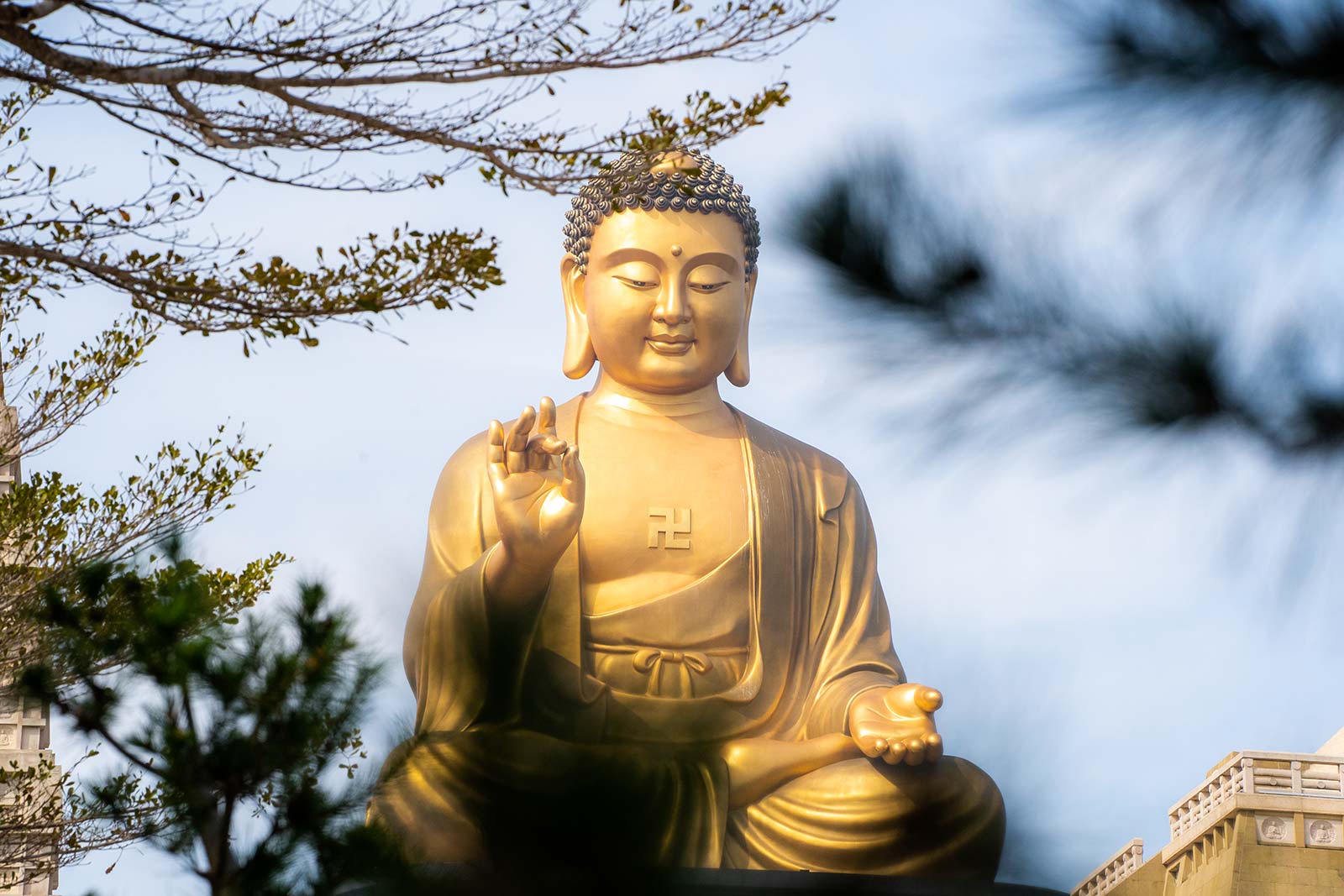

The Fo Guang Shan Monastery and adjacent Fo Guang Shan Buddha Museum are the head of the Fo Guang Shan Buddhist order, and one of Taiwan’s primary centers of Buddhism. Located in Kaohsiung’s Dashu District overlooking the Gaoping River, this religious complex is the largest Buddhist center in all of Taiwan.
The Fo Guang Shan Monastery is a sprawling complex that includes numerous temples, pagodas, meditation halls, and gardens, all of which are designed to foster an atmosphere of tranquility and contemplation. The Monastery is open to visitors of all faiths, and offers a range of programs and activities aimed at promoting spiritual growth and development.
Located just next door, Fo Guang Shan Buddhist Museum is one of the largest Buddhist museums in the world. Its centerpiece, a 108-meter-tall bronze Big Buddha, can be seen from the neighboring countryside and is the tallest sitting bronze Buddha statue in the world.
The museum’s plaza is home to eight seven-story yellow-roofed pagodas, symbolically referring to the Noble Eightfold Path, a fundamental Buddhist principle. The walkways feature large-form Buddhist art in the form of 22 semi-reliefs known as the Stories of the Buddha. These reliefs tell the story of Buddha’s acts of compassion and wisdom.
The museum is home to a vast collection of artifacts, artworks, and historical objects that span the entire history of Buddhism, from its origins in ancient India to its spread throughout Asia and beyond. Art galleries on the first and second floor display multiple permanent exhibitions. The Museum of Underground Palaces exhibits Buddhist artifacts from Underground Palaces around the world.
Dharma Drum Mountain Nung Chan Monastery in Beitou District, Taipei City
A Serene “Zen” Getaway in Taipei’s Backyard
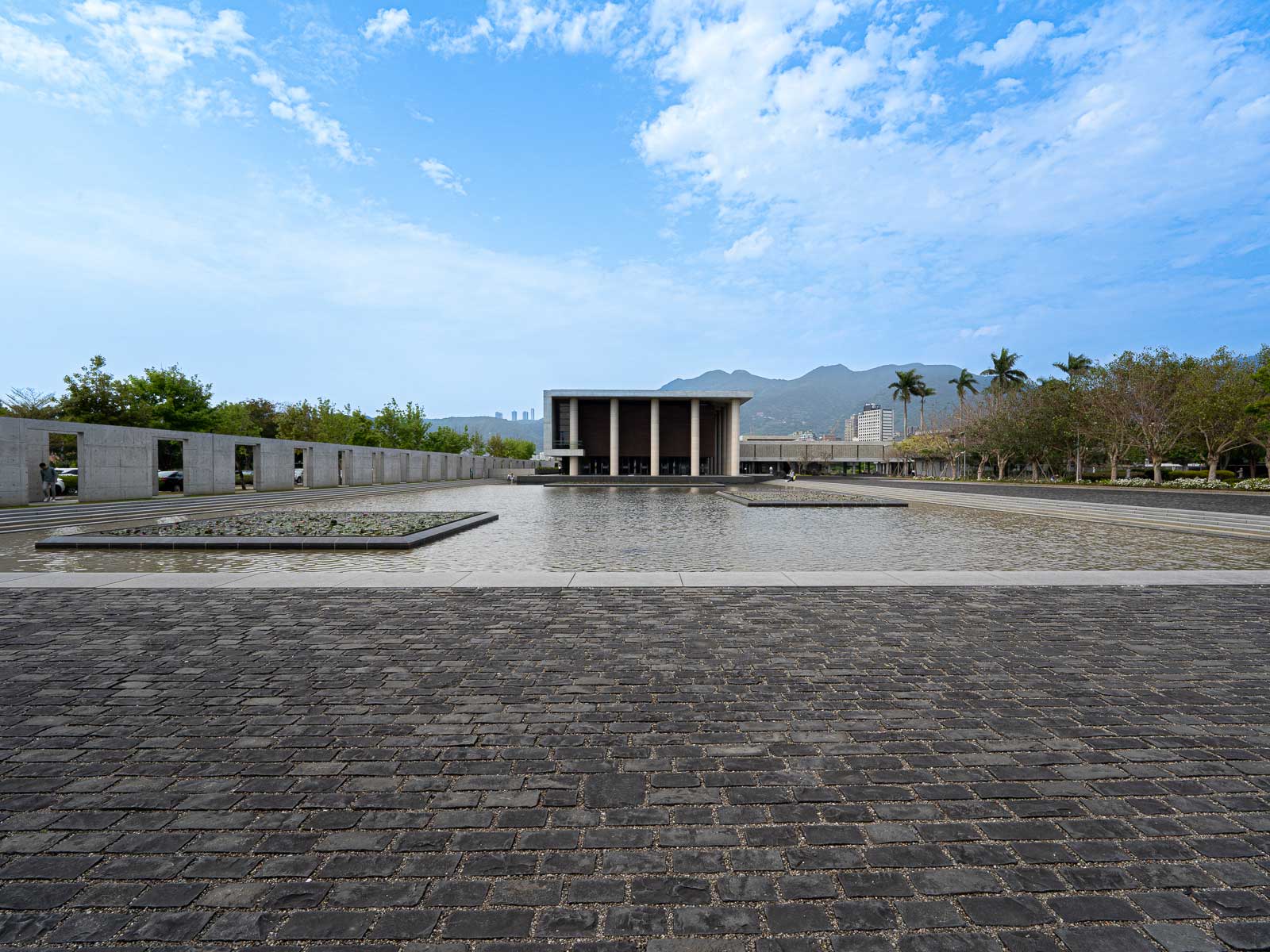
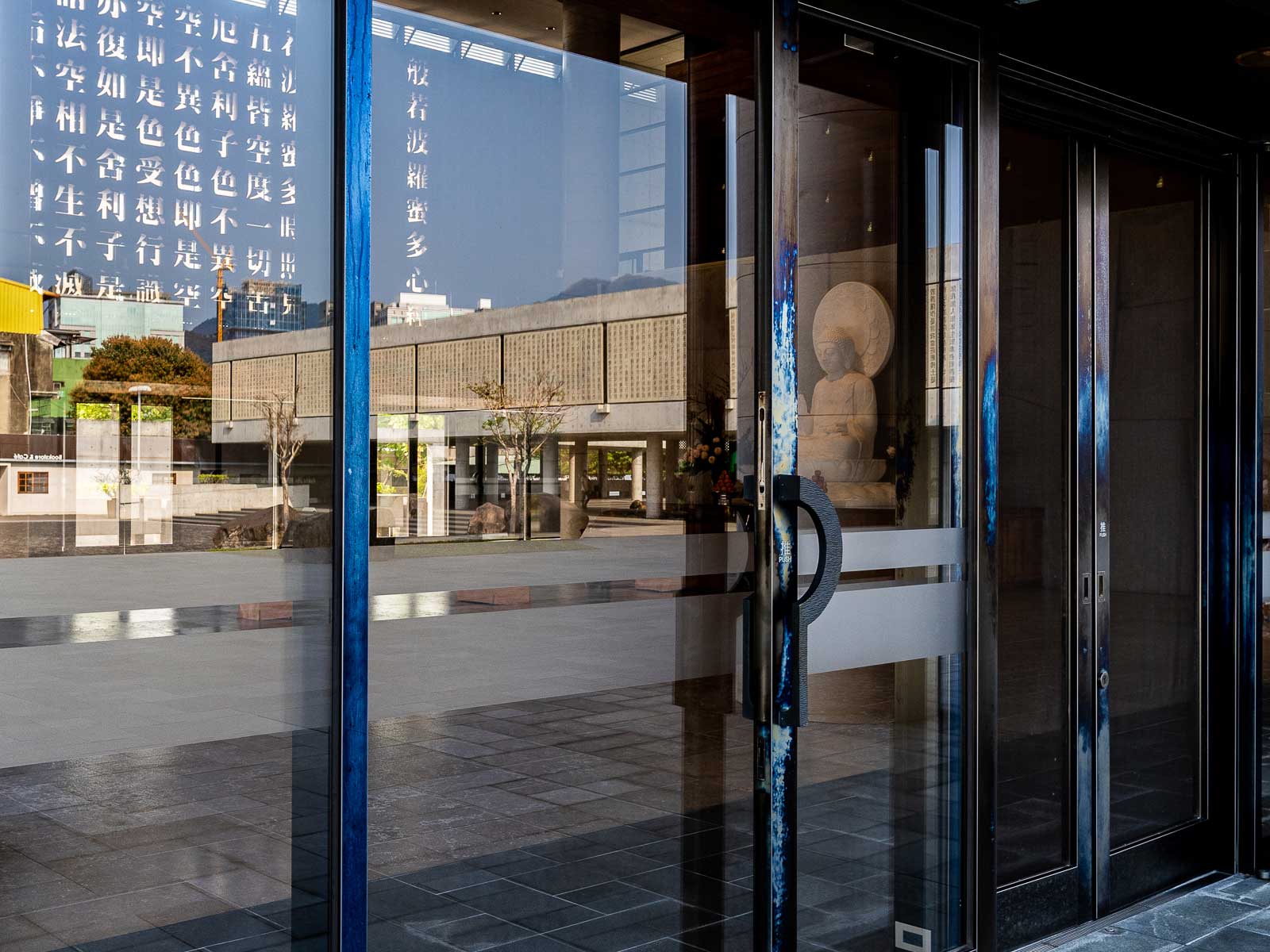
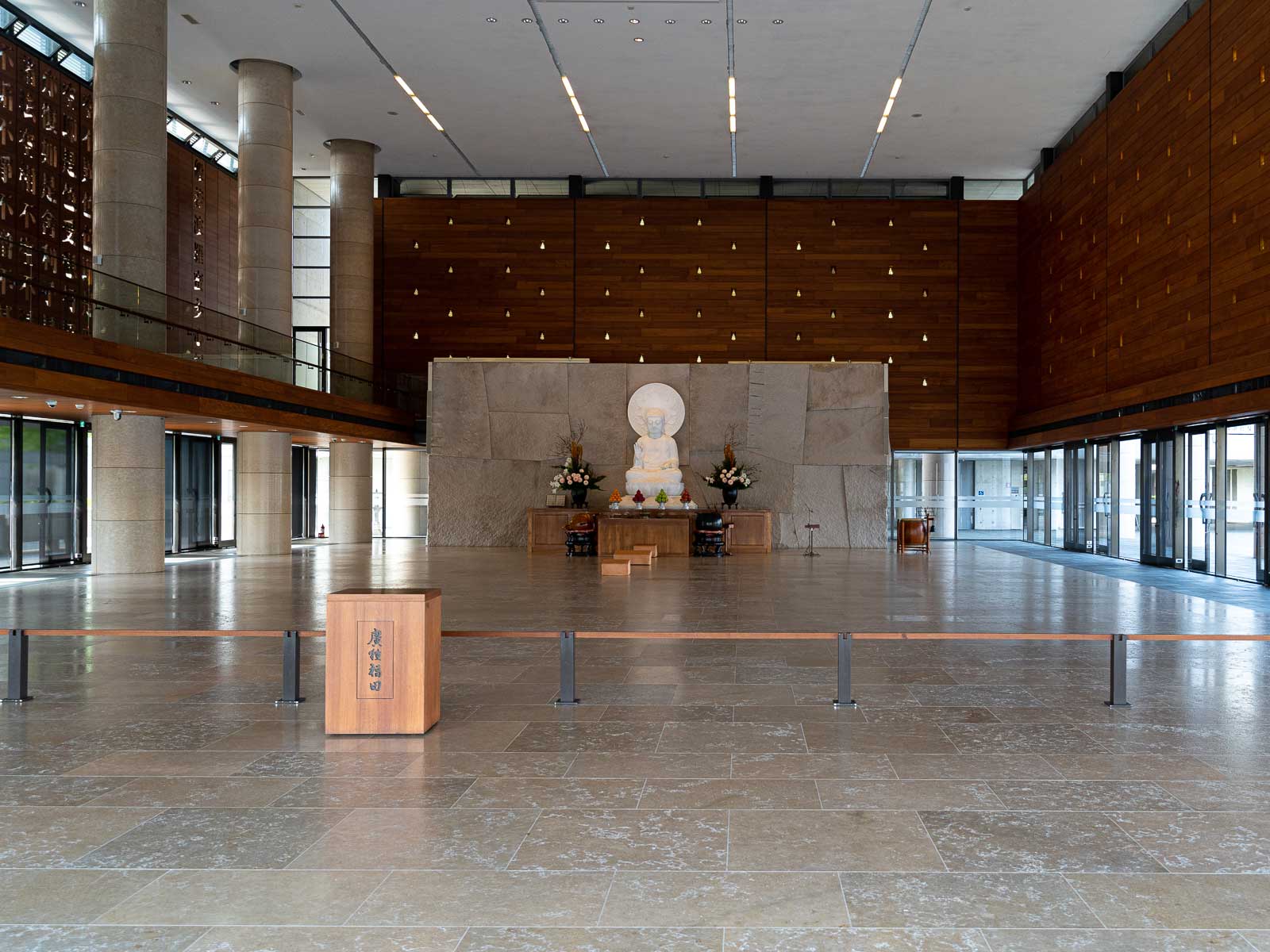
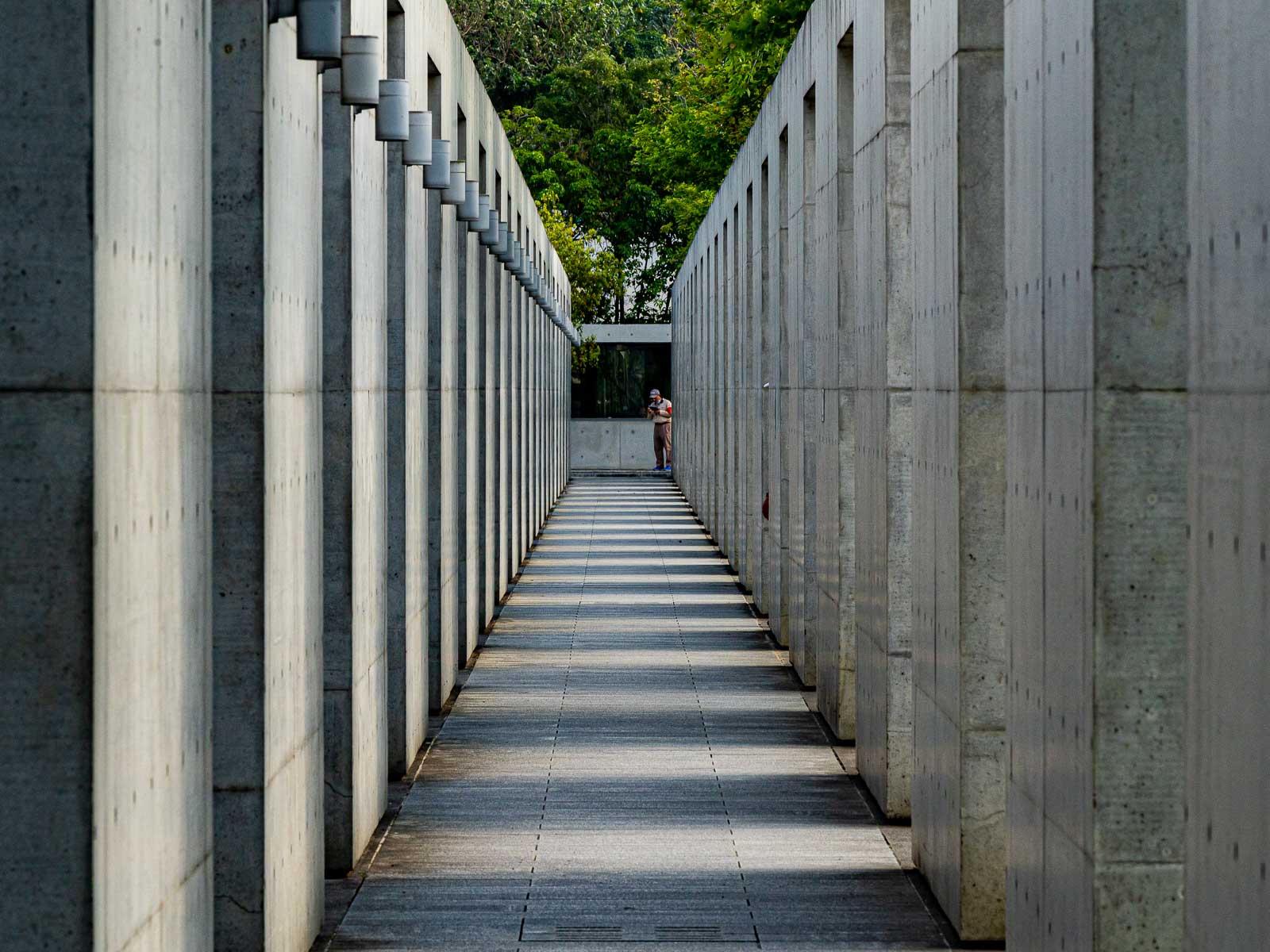
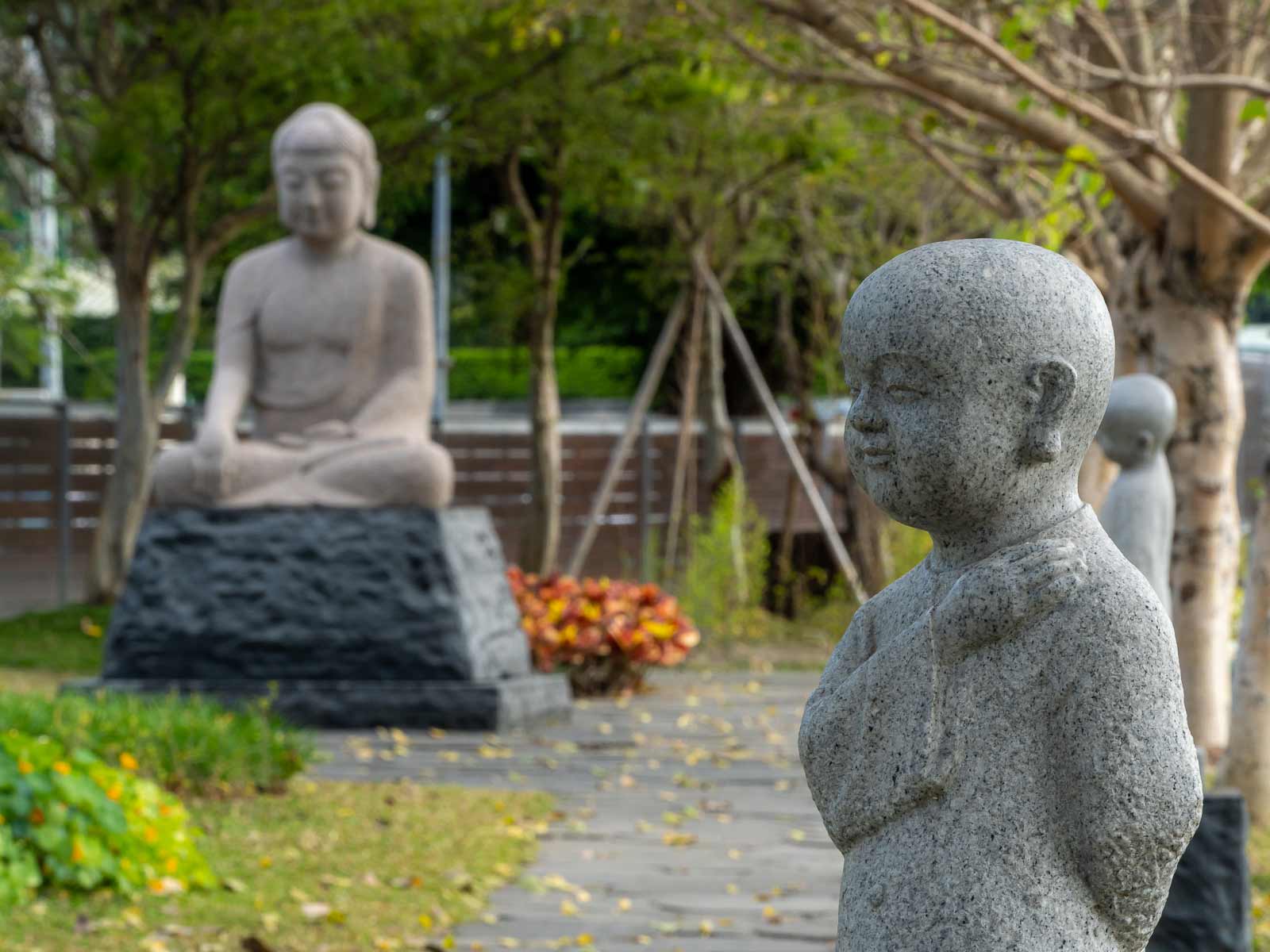
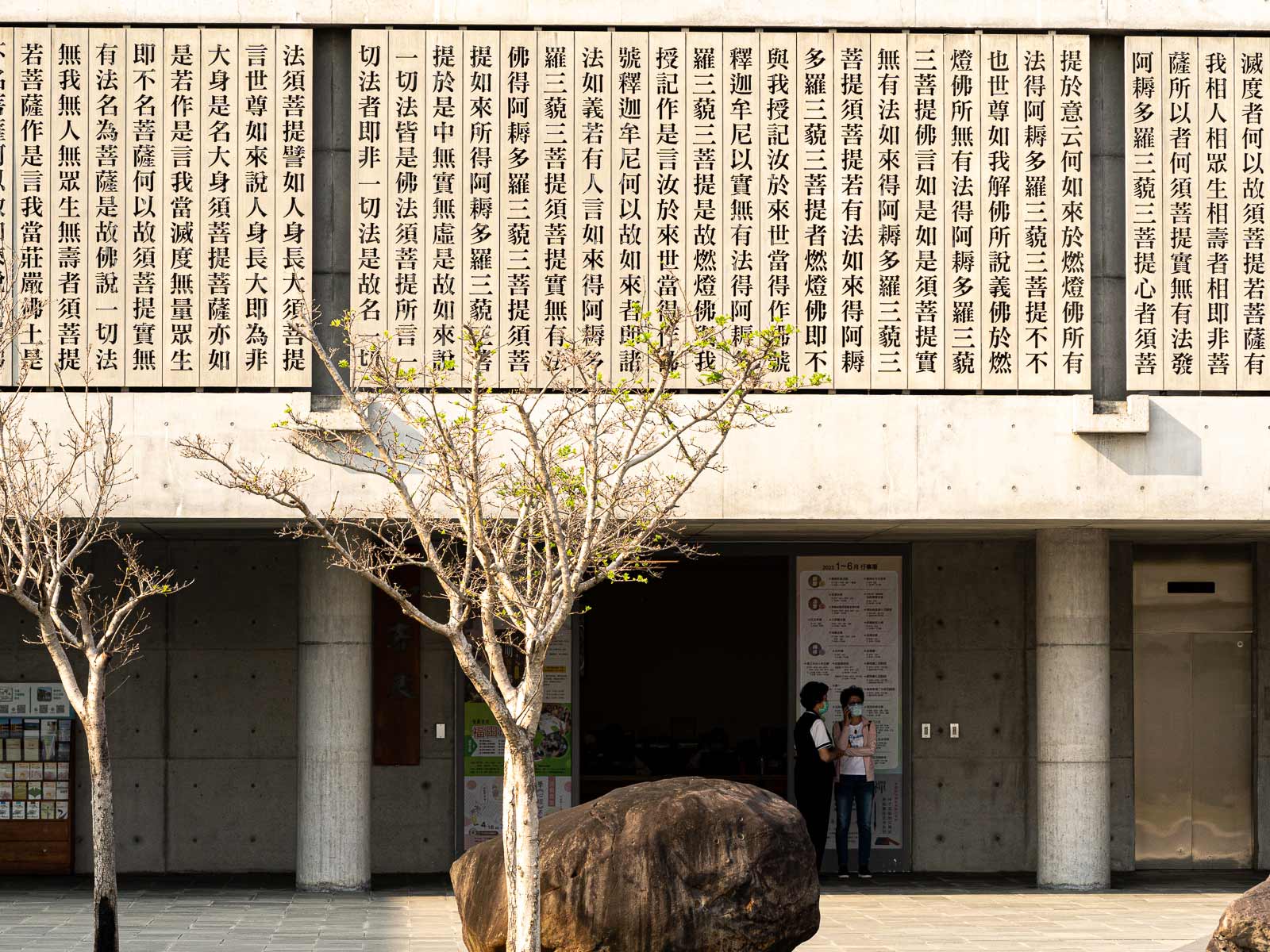
Located just outside the city, close to the Qiyan MRT station on the red line, Dharma Drum Mountain Nung Chan Monastery is an accessible Buddhist monastery that offers a serene and photogenic environment very different from that of the Taoist temples of downtown Taipei.
Founded in 1975, Nung Chan Monastery has evolved from a simple farmhouse, where early monks practiced farming and Buddhism, into a modern destination that offers opportunities for meditation, Buddhist education, and the appreciation of architecture. Today, the monastery’s minimalist cement architecture, reflective pool, large outdoor gardens and adjacent colonnade make it easy to mistake the complex for an art gallery.
Notably, the Nung Chan Monastery is home to the recently completed Water-Moon Dharma Center, which won the 2013 Taiwan Architecture Award for its manifestation of the Buddhist concept of “dharma” through architectural techniques. Designed by renowned Taiwanese architect Kris Yao, who himself is a longtime follower of Tibetan Buddhism, the minimalist structure combines light, shadow, water and reflected image to juxtapose the real with the illusory, bringing to mind the Buddhist idea that “perception is illusory”. Yao has mentioned this was one of the most challenging projects of his career, as the initial proposal only featured six Chinese characters which translate to “Moon in the water, flower in the air”.
Particularly amazing is the hollowed-out lattice design of the west wall, which is engraved with the text of the Heart Sutra. When the sun sets, it shines through the shapes of the characters. Outside, Mt. Datun and the peaks of Yangmingshan are visible to the west. For its architecture and uniquely serene environment, we highly recommend Dharma Drum Mountain Nung Chan Monastery.

